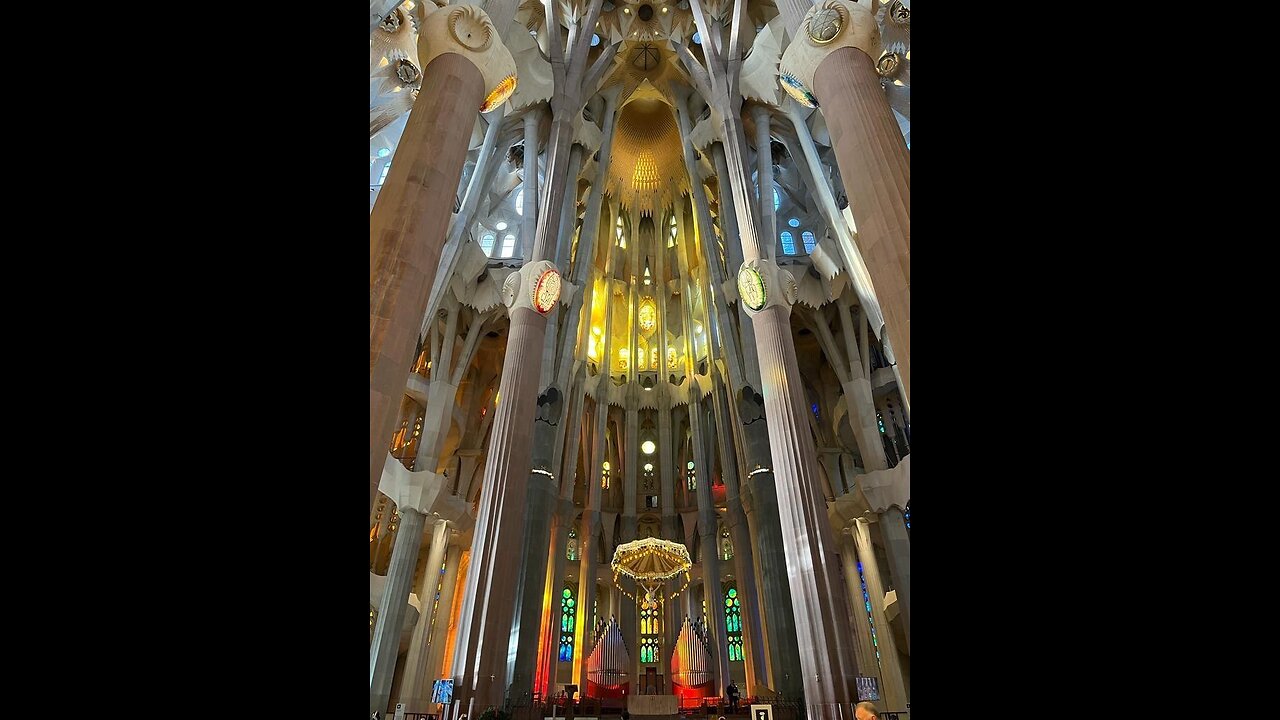Premium Only Content

Explore Sagrada Familia: Inner and Outer Beauty
The Sagrada Família, officially known as the Basílica i Temple Expiatori de la Sagrada Família, is a monumental, unfinished Catholic church in Barcelona’s Eixample district. Initiated in 1882 under architect Francisco de Paula del Villar, it became Antoni Gaudí’s lifelong project in 1883. Gaudí transformed the design, blending Gothic and Art Nouveau styles, and devoted his remaining years to its construction—leaving it less than a quarter complete at his death in 1926.
Funded entirely by private donations, the construction has progressed slowly, facing interruptions such as the Spanish Civil War, during which parts of Gaudí’s models were destroyed. Advances in technology, including computer-aided design, have accelerated progress, and in 2010, the church was consecrated as a minor basilica by Pope Benedict XVI. UNESCO recognized Gaudí’s contributions by including parts of the Sagrada Família in its World Heritage Site listing of his works.
The basilica is renowned for its intricate facades: the ornate Nativity Façade celebrating Christ’s birth, the austere Passion Façade depicting his suffering, and the still-under-construction Glory Façade symbolizing the road to God. Inside, visitors are awed by its organic, tree-like columns, vibrant stained-glass windows, and a design that creates a unique play of light and space. With its ongoing construction and ambitious design—featuring multiple spires and a rich tapestry of symbolism—the Sagrada Família remains both an architectural marvel and a living testament to Gaudí’s visionary genius, drawing millions of visitors each year.
-
 1:13:13
1:13:13
Michael Franzese
12 hours agoMegyn Kelly’s UNFILTERED Take on The Ukraine War, Trump & Modern Masculinity
126K52 -
 1:43:21
1:43:21
Redacted News
13 hours agoBREAKING! UKRAINE AGREES TO CEASEFIRE WITH RUSSIA... BUT THERE'S A BIG CATCH | Redacted News
215K354 -
 58:17
58:17
Candace Show Podcast
14 hours agoShould We Feel Bad For Blake Lively? | Candace Ep 157
178K374 -
 3:06:52
3:06:52
The Nerd Realm
15 hours ago $14.13 earnedHollow Knight Voidheart Edition #19 | Nerd Realm Playthrough
106K5 -
 1:17:27
1:17:27
Awaken With JP
17 hours agoThe Current Thing: Tesla Protesting - LIES Ep 82
173K82 -
 1:07:08
1:07:08
Sean Unpaved
14 hours agoNFL Free Agency Rolls On! MLB Spring Training Heats Up along with 3x World Series Champ Dave Stewart
104K3 -
 2:10:15
2:10:15
Right Side Broadcasting Network
19 hours agoLIVE REPLAY: White House Press Secretary Karoline Leavitt Holds Press Briefing - 3/11/25
187K46 -
 2:06:00
2:06:00
The Quartering
18 hours agoTrump Goes NUCLEAR On Canada, Blasts Massie, Harry Potter Race Swap, Man Humiliated On TV Show
136K71 -
 1:03:09
1:03:09
The White House
17 hours agoPress Secretary Karoline Leavitt Briefs Members of the Media, Mar. 11, 2025
127K78 -
 1:07:03
1:07:03
Winston Marshall
16 hours agoEXCLUSIVE : Oliver Anthony On Life After ‘Rich Men’, The Christian Counter Culture and The Elites
84.6K16